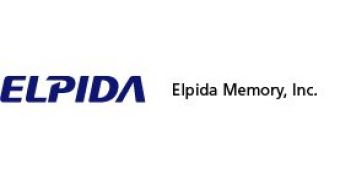While Corsair and Transcend are releasing high-capacity and ultra-fast DDR3 memory kits for the high-end segment, other companies, like Elpida Memory Inc. in this particular case, are, instead, focusing on the lower segment where, not only is affordability a must, but the actual products must do their best to still offer reasonable performance. Elpida managed to complete the development of its 65nm-based “shrunken chip version” 1Gb DDR3 SDRAM, the 65nm XS. This product is price-friendly thanks to the use of ArF dry scanner equipment, a method that shortens the actual manufacturing process and reduces the equipment cost.
The new 65nm XS is aimed at the PC and DRAM market and is part of Elpida's two-track R&D approach, which combines layout innovation and conventional process migration, enabling capital-investment reductions. The original 65nm s (shrink) was developed in 2008 and now, with the completion of the 65nm XS (extra shrink), the developer aims to revitalize the DRAM market that has been in a slump since 2008.
Compared with the 65nm s, every 65nm XS 300mm wafer has 25% more chips. This is possible because the actual size of the chips used in their creation is significantly smaller than the standard ones. These shrunken chips are meant to play the part of cost-accessible parts, while Elpida also focuses on products based on the more advanced 50nm and 40nm manufacturing processes.
“Along with migrating to advanced processes such as 50nm and 40nm the company is developing shrunken chip versions through extensive use of existing ArF dry scanner equipment. As a result, a 65nm S shrink version was developed in 2008 and now a 65nm XS extra-shrink version has been completed” the press release noted.
The 1-Gigabit DDR3 SDRAM will have a price comparable with that of an equivalent (performance-wise) 50nm process-based dynamic random access memory. Mass production is set to start in the first quarter of 2010.

 14 DAY TRIAL //
14 DAY TRIAL //